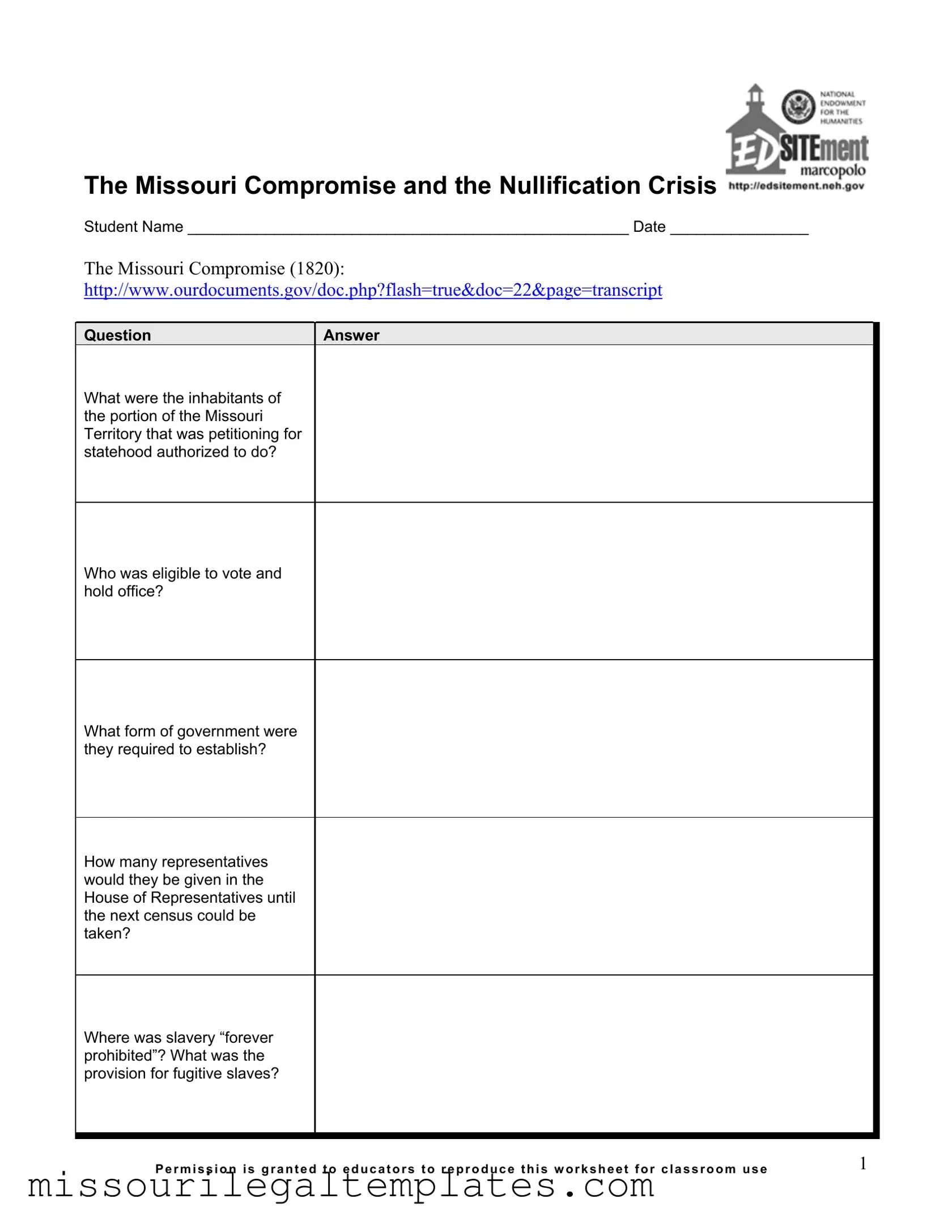Fill in a Valid Missouri Compromise Template
The Missouri Compromise was a significant legislative agreement reached in 1820 that aimed to maintain the balance of power between free and slave states in the United States. This compromise allowed Missouri to enter the Union as a slave state while simultaneously admitting Maine as a free state, thereby preserving the delicate equilibrium. Understanding the implications of the Missouri Compromise is essential for comprehending the evolving landscape of American politics and society during this tumultuous period.
To gain deeper insights, please fill out the form by clicking the button below.
Fill Out This Form





